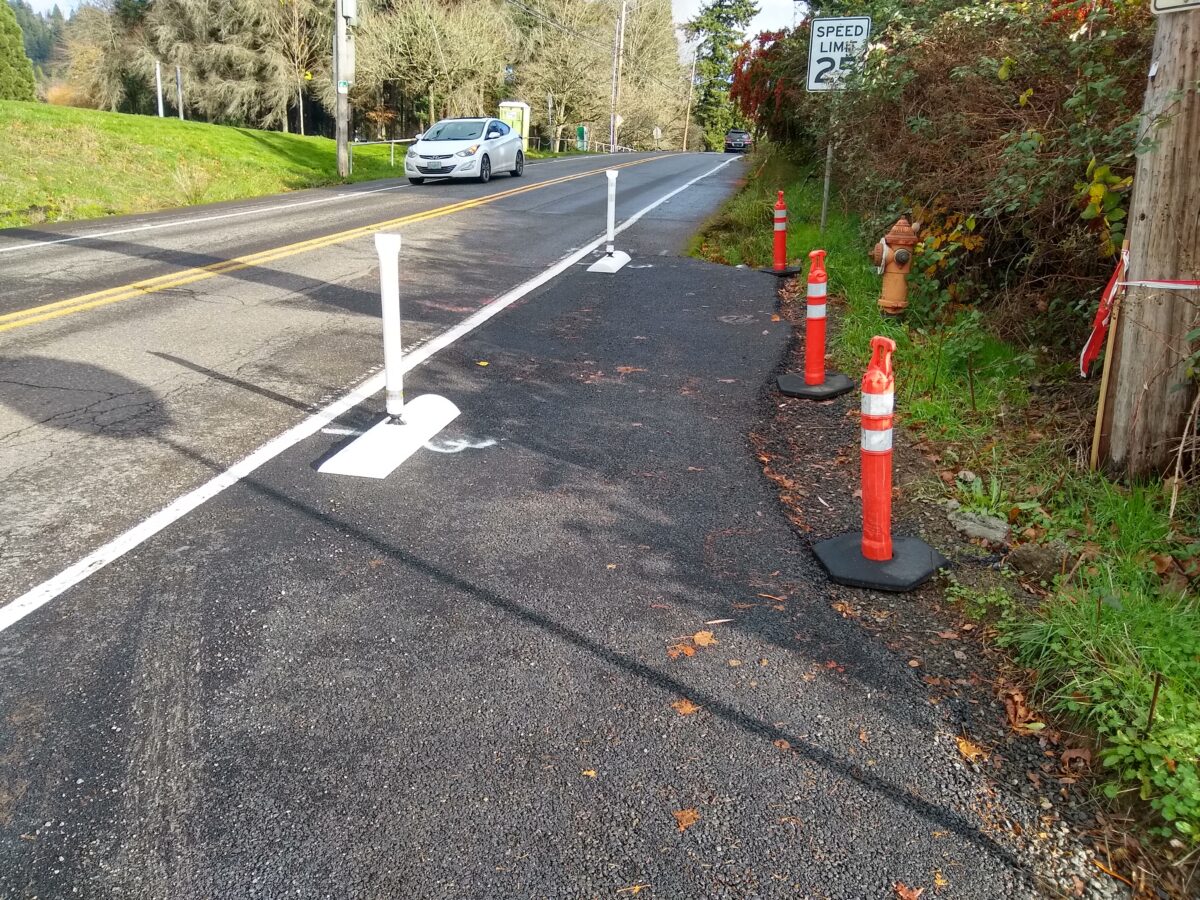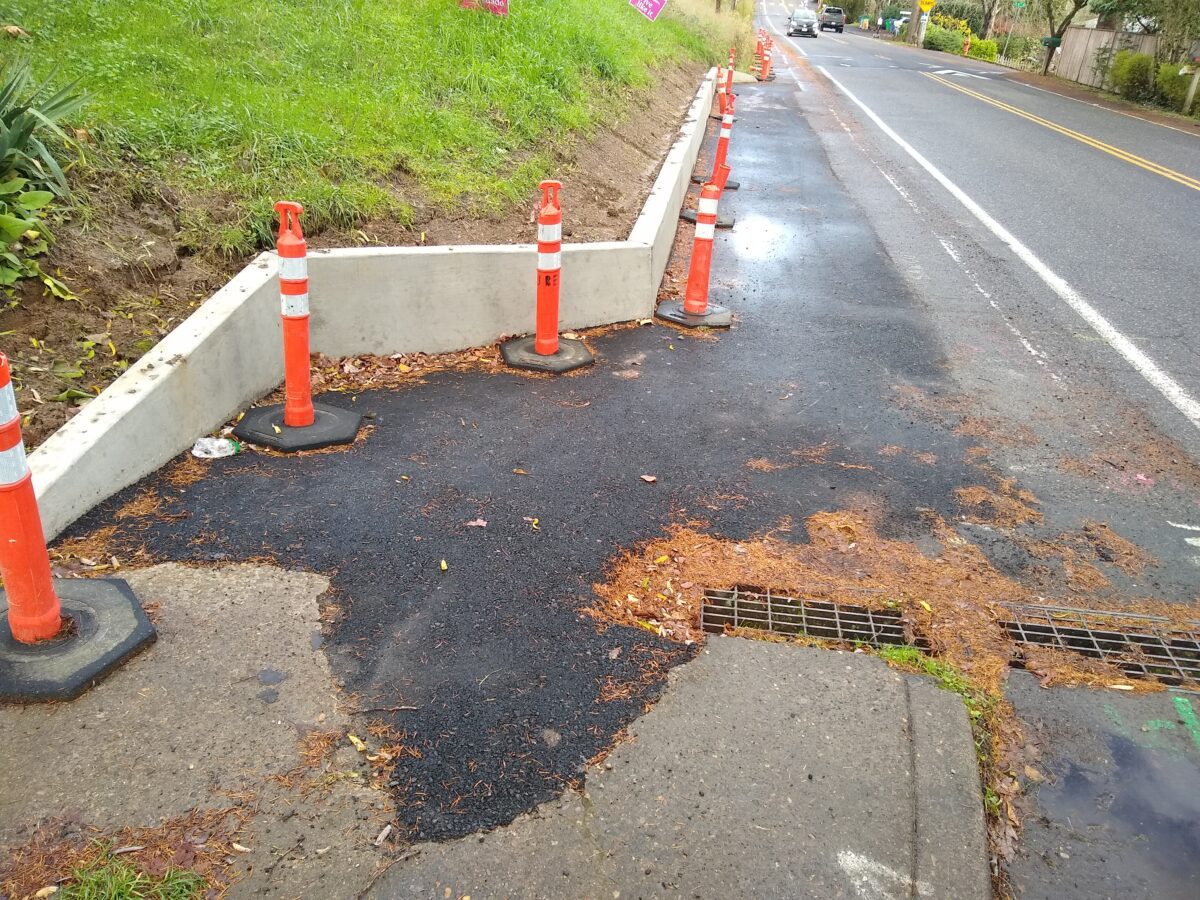
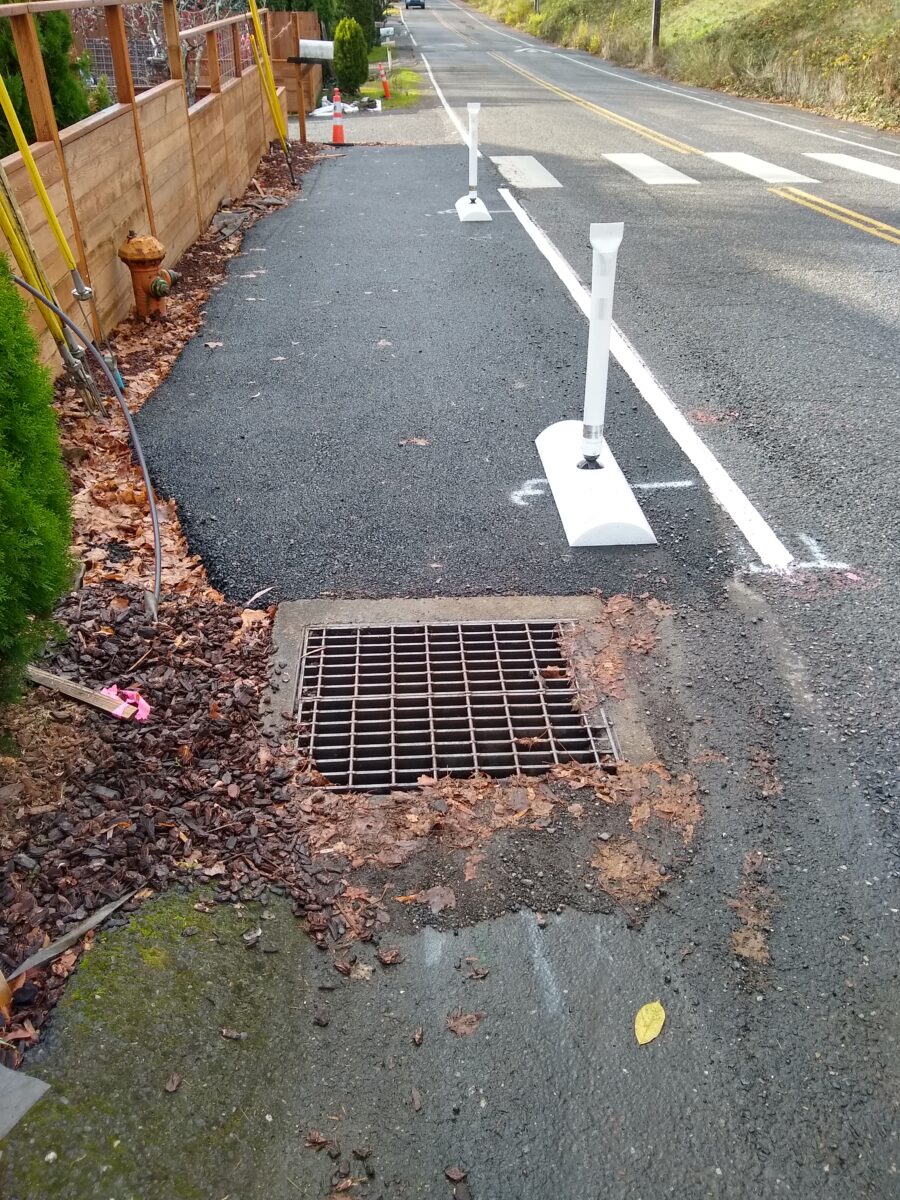

SW Portland is a tricky place to get around without a car. Getting to and from school is no exception. Many roads in the area have two lanes for cars and at best a well-worn path through weeds and gravel for everyone else. SW Hamilton Street qualifies as one of these roads. This is the second of three articles that details the challenges of trying to retrofit a road so it works for more than just drivers. The first article shared the basic characteristics of Hamilton.
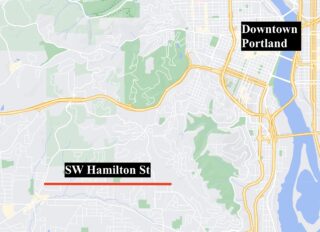
In this article, I’ll recap a specific project to illustrate how the sausage is made when it comes to making changes to unsafe streets.
In March 2016, the Bureau of Environmental Services (BES) constructed bioswales on SW Hamilton St. between 47th Ave and 45th Ave. In addition to putting sandbags into the hillside, and enhancing the drainage ditches on the north side of the street, BES extended the shoulders to be six feet wide. This was seen as a low-cost mechanism for improved pedestrian infrastructure to be incorporated into a non-transportation project (this is similar to projects highlighted earlier this year by Portland City Commissioner Mingus Mapps to address traffic violence). As a result, the scope was limited to where the swales were actually being constructed and not an inch further.
One of the few sidewalks in the neighborhood leading to Bridlemile Elementary was just outside of the project boundary. The roughly 30-foot gap between the end of the sidewalk and the edge of this project was cause for alarm when the project was brought to the neighborhood. The striping in place at the time left that section of shoulder at about two feet wide. Despite requests from the neighborhood for PBOT to get involved there was no funding and this gap languished for over five years.
The roughly 30-foot gap between the end of the sidewalk and the edge of this project was cause for alarm when the project was brought to the neighborhood.
A lot can happen in five years. During that time Portland’s Transportation System Plan (TSP) was adopted and refined in 2016 and Southwest In Motion (SWIM) was adopted in 2019.
Transportation advocate Ryan Bass represented Bridlemile Neighborhood Association during this time and kept the project on PBOT’s radar. A mix of advocacy and concessions managed to get this section of road on various priority lists the agency maintains. Within the TSP the project managed to attract “over 60 comments” according to Bass and onto the 1-10 year constrained list as project number 90034.1. Within SWIM, the segment of Hamilton between 45th Ave and 48th Ave was labeled BP-43 and identified as one of 17 “Top Tier Projects.”
Advertisement

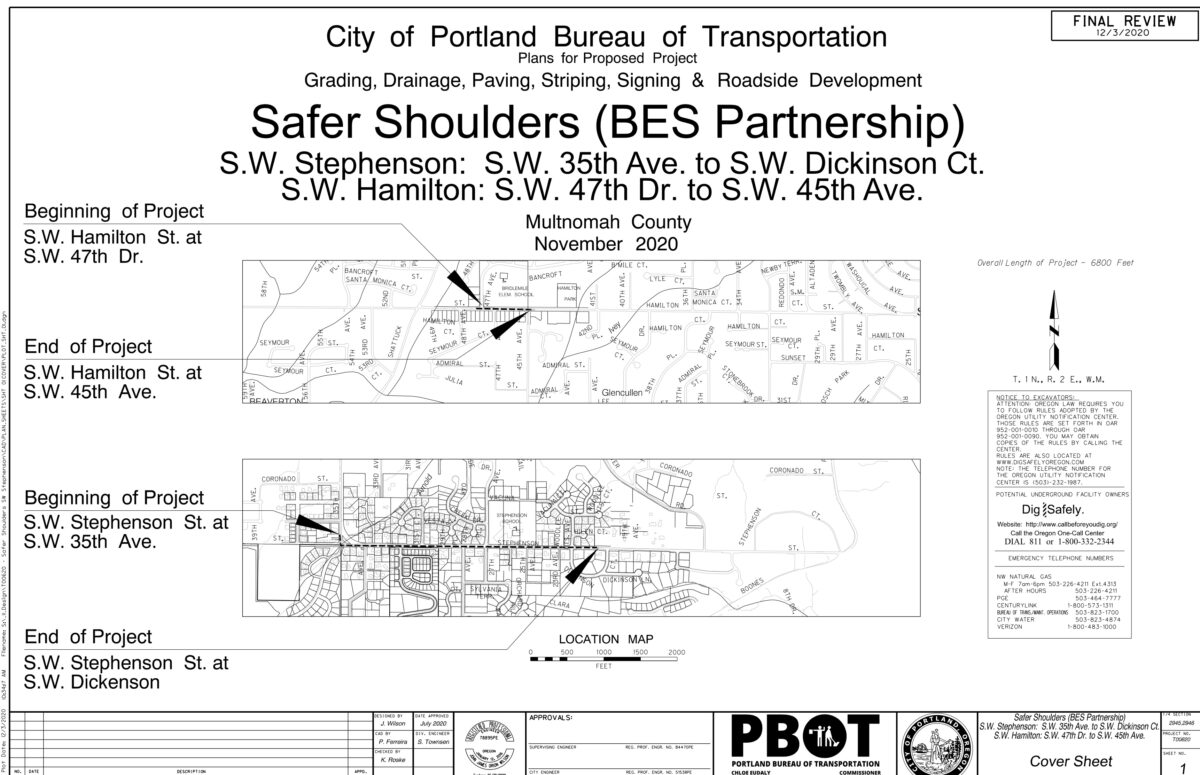
This targeted advocacy gave PBOT the ability to use Safe Routes to School funding through their Fixing Our Streets program for a subsection of the project. While the desired sidewalks are a hard sell, the proposed project released 60% designs in May 2020 that included curb cuts on both the NE and NW corners of Hamilton and 47th Dr, a sidewalk extension from 47th Dr to 47th Ave, extended shoulders on the south side of Hamilton to the east and west of 45th Ave and accompanying curbs to protect those extended shoulders.
As many advocates are aware, by the time you get to 60% a project is pretty well baked as a budget has been set and any designs already encompass that restriction. However when it comes to cutting back on scope it’s never too late.

The final designs released in December 2020 eliminated nearly all concrete work, meaning that the curb cuts, sidewalk extension, and curb protected shoulders were gone, with only a small retaining wall making it through. Plastic “Tuff-curbs” took the place of concrete and an asphalt ramp was meant to connect the sidewalk to the shoulder and crosswalk.
This significant reduction of scope prompted Bass to contact me to help learn more and see what could be done to save this project. It became one of many projects impacted by the reduction of gas tax revenue within Portland and there was nothing to be done. Just like that it was too late.
Construction began on the first day of school. It was fitting that after a year-and-a-half of remote learning, the first full day of school would come with construction equipment. In the following weeks construction was slow and most days nothing happened.
A month and a half after construction began the asphalt was finally on the ground. A month after that, just before Thanksgiving, four of the plastic curbs were installed.
Looking back, there’s a sense of sadness. According to Bass, “the work that’s been done is appreciated but it feels like a quick fix without doing what needs to be done long term.” As we kept talking he mentioned that “there were two crosswalks put in and some speed bumps put in that have improved things from a Safe Routes perspective.” The project as originally designed represented a fix to the deficiencies that existed and what’s on the ground didn’t address all of the access issues. “It creates an awkward situation because we didn’t do the full project.”
With project work now wrapping up it’s not clear if the project is considered complete for SWIM or part of the TSP. Access on Hamilton from 48th Avenue is part of the scope in both the TSP and SWIM and the current lack of a shoulder leaves much to be desired.
Abandoning the curb cut not only makes access to the crosswalk difficult but it also allowed the drainage grates to be left untouched. The foot of the sidewalk closest to the road had a sharp drop of several inches to the grate below. It would not take much for an injury to occur as someone using a mobility device, stroller, or bicycle had their visibility impaired or focused on how they were going to make the sharp turn to access the crosswalk at 47th Dr. That same crosswalk now provides a worse connection than continuing down Hamilton to 47th Ave and using an unmarked crossing.
Looking back, this project improved conditions greatly and stopped short of the already slimmed goals codified into multiple plans by PBOT.
Next time we’ll take a look at how the development of land for multi-million dollar houses has provided opportunities to meaningfully improve infrastructure for vulnerable road users. Thanks for following along on this wonky dive into Hamilton!
